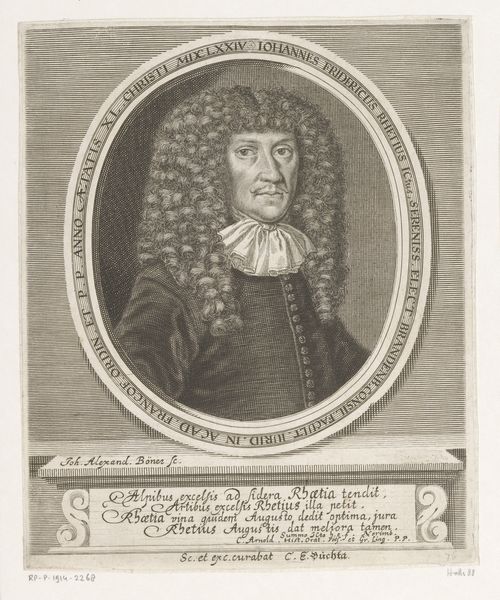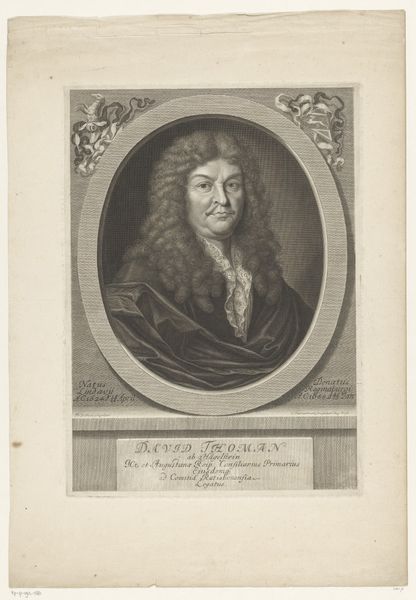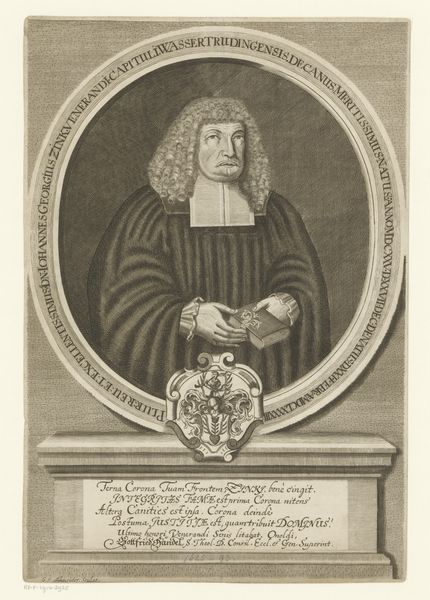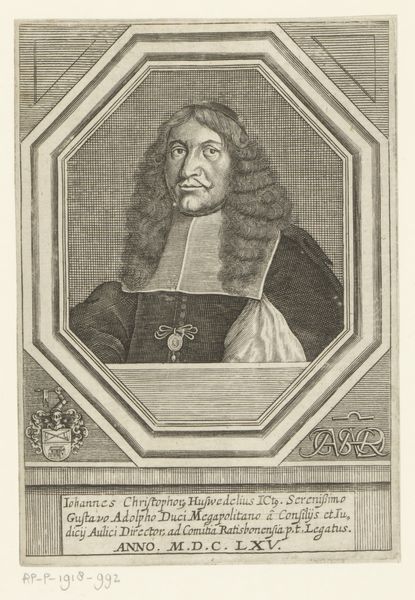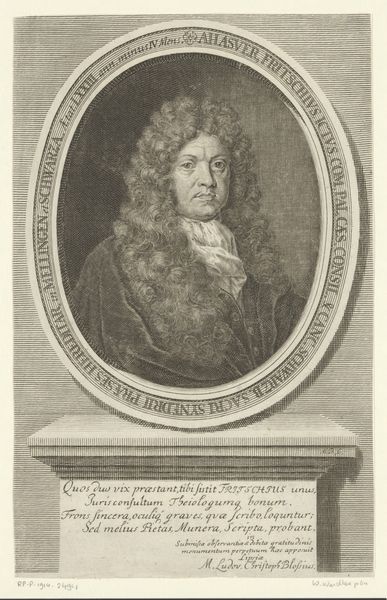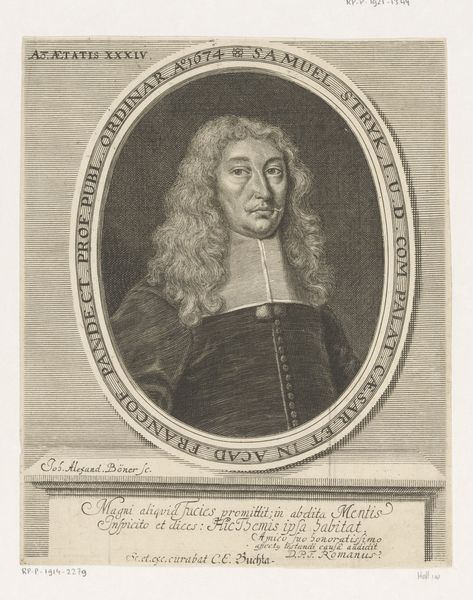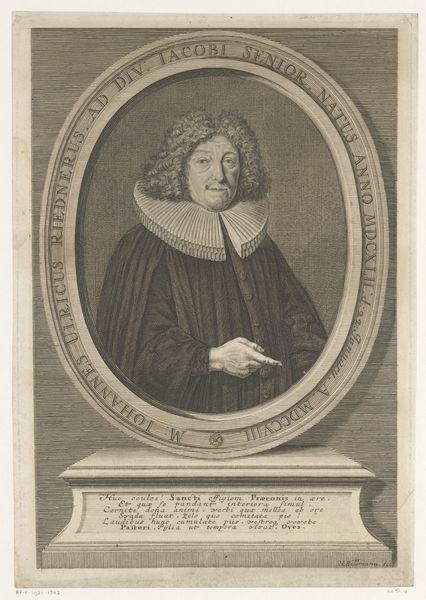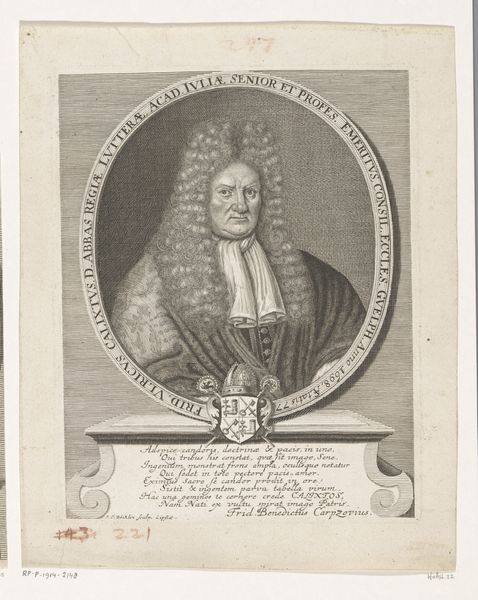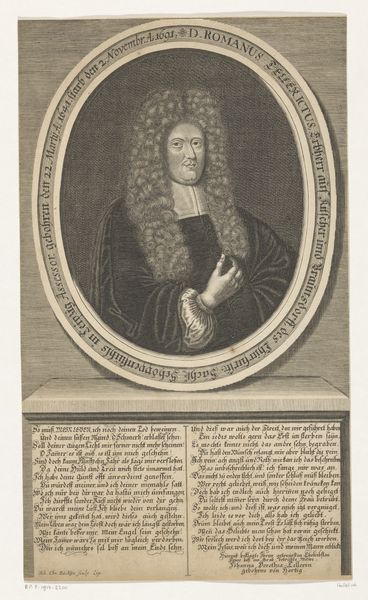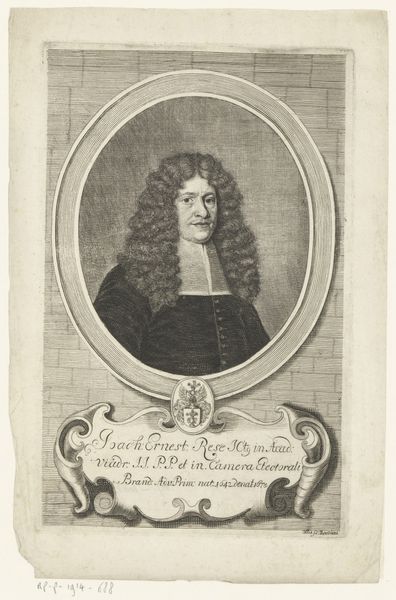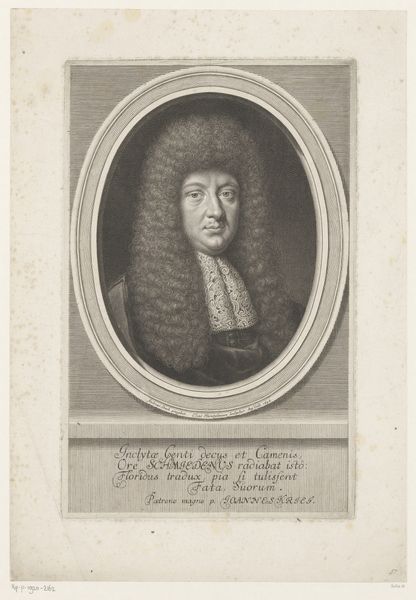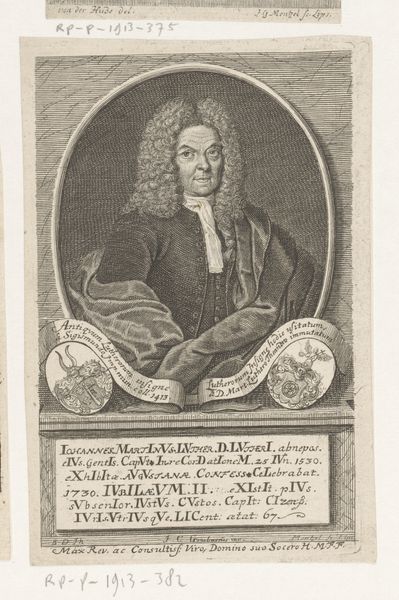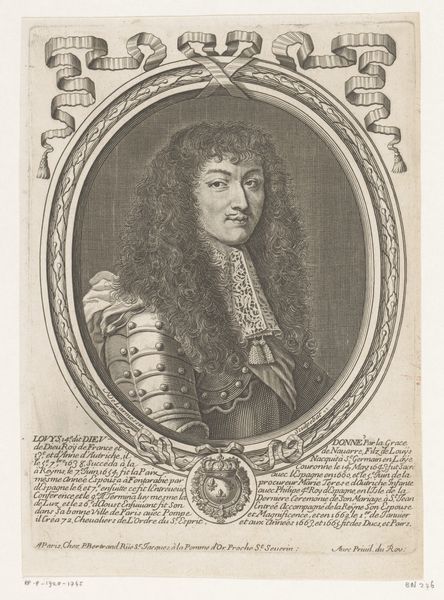
print, engraving
#
portrait
#
baroque
# print
#
history-painting
#
engraving
Dimensions: height 184 mm, width 143 mm
Copyright: Rijks Museum: Open Domain
Curator: The first thing I notice about this image is the subject’s gaze; it’s so direct. Editor: Let me introduce you to this Baroque-era print, dating to 1687. It's a portrait of Jacob Pancratius Bruno, created when he was 58 years old, crafted by August Christian Fleischmann. Curator: Bruno, eh? An imposing name. Beyond his unwavering gaze, I immediately note the oval framing, a popular Baroque convention. And all that script surrounding the portrait... what do we know about the symbolism? Editor: As was common at the time, it's replete with learned references and pronouncements. In fact, beneath the image there's a dedication stating that it is his face if the spirit can be known, his ingenuity that his scripts of men produce. He looks like a pillar of the community, likely of considerable social and political stature within his time. Curator: Yes, definitely. Everything about this portrait speaks to authority and learning. Look at his clothing: the meticulously rendered lace collar, the academic robe, even that weighty chain… Fleischmann skillfully uses these material details to underscore Bruno’s persona. One can feel the weight of cultural expectations in this carefully constructed representation. Editor: And look at how the Latin inscription actually becomes part of the portrait. I'm interested in the interplay between image and text, between what we see and what they want us to understand. And while a print medium might imply a democratizing impulse, in fact this format only really spread an elite culture even further and cemented its social and intellectual standing. Curator: Absolutely, print allowed ideas and images to circulate in unprecedented ways, shaping public perception and historical narratives. What fascinates me is how artists like Fleischmann and patrons like Bruno used the circulation to cultivate specific cultural and intellectual associations. Editor: Precisely. Analyzing such artwork offers us insights not only into the subject, but also the complex web of social, cultural, and artistic forces at play in the 17th century. Curator: Thinking about the lasting impact of portraits like this is also fascinating. These types of formal artistic products ensured an image was not just for a person's contemporaries, but that a specific version of themselves and their cultural contributions were etched for centuries to come.
Comments
No comments
Be the first to comment and join the conversation on the ultimate creative platform.
